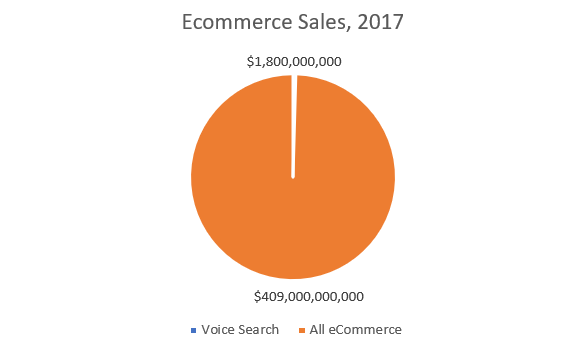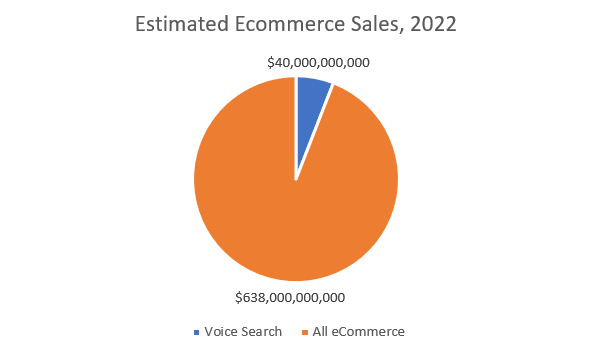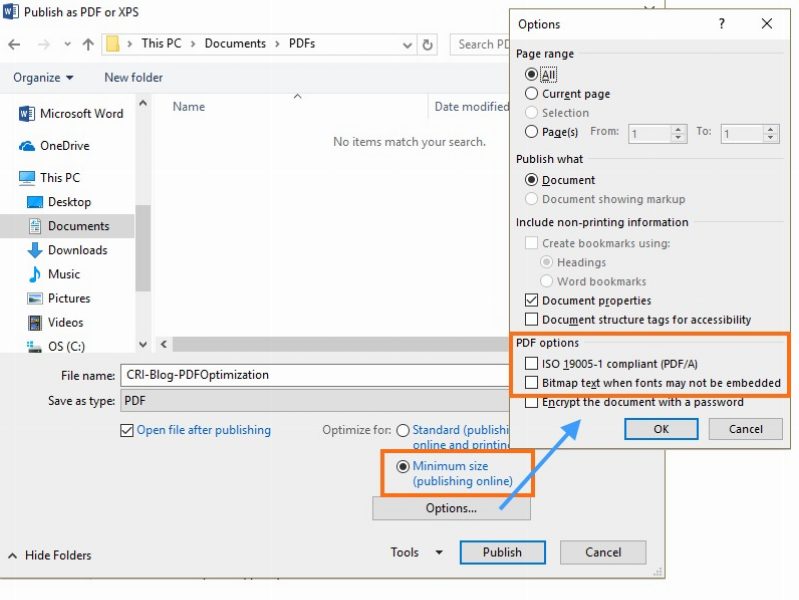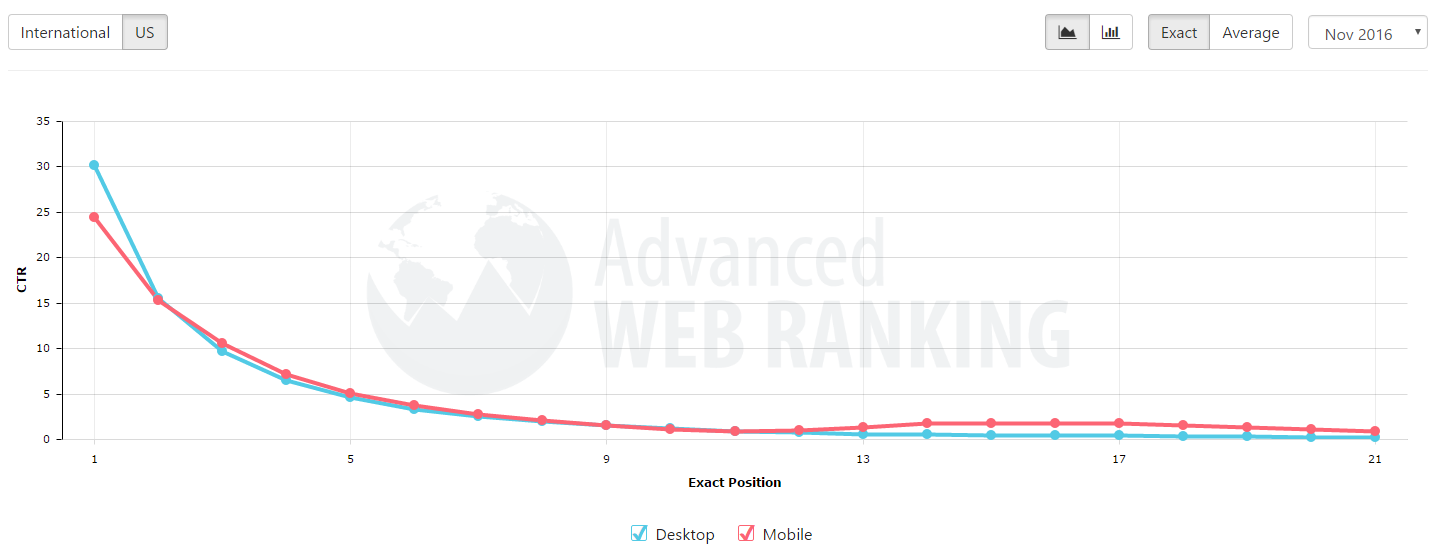by Charles River Interactive | May 14, 2018 | Industry Trends, Local SEO, Organic Search, SEO, Uncategorized
“Alexa, order floor mats for my Honda Pilot.”
“OK Google, find me a place for tacos right now.”
“Hey Siri, when is World Immunization Week?”
Voice search is more and more a part of our everyday lives. As the technology becomes more commonplace, and as developers expand the number and types of actions you can complete using just your voice, the opportunities for businesses grow and change on a seemingly daily basis.
We’ve written about optimizing for voice search before; here is what we have learned since in preparing our clients for a mobile, screen-less future in search.
Who Uses Voice Search?
- 30% of web browsing sessions will be screen-less by 2020, according to Gartner
- Voice search usage skews heavily toward Millennials—more than 1 out of 3 Millennials do or plan to use a voice-search aided virtual assistant, as compared to just 1 out of every 10 members of the Baby Boomer generation, according to eMarketer
- Millennials are more likely to use voice search in part because they are the largest group of owners of a smart home device, according to Walker Sands
- Younger demographics are more likely to use voice search on a mobile device, according to Global Web Index—25% of users ages 16-24 reported having used a voice search tool on their mobile device in the last month
Why Voice Search?
It is possible to predict why a user might choose to search via voice based on readily available information such as device and location.
Mobile Voice Search is Local SEO
Voice searches originating on a mobile device tend to be location-dependent—that is, users typically search for strings such as, “[service] near me”, or “nearby [product]”.
The optimal strategy for capturing traffic from these voice searches has not changed much since its debut. We know that Google voice search, for instance, relies on structured data of the sort that drives the appearance of featured snippets but which explicitly includes location and other relevant information, such as hours. A thorough local SEO strategy should be sufficient to ensure that your site is positioned to capture such traffic. If you’re not sure if your business or website is already capitalizing on local SEO opportunities, reach out to us!
Smart-home Voice Search is an Ecommerce Opportunity
According to data published via Statista, the general retail ecommerce sector in the US economy is estimated to have totaled over $409 billion in sales in 2017, and is forecast to surpass $638 billion by 2022. Voicebot.ai, meanwhile, pegs the US retail ecommerce voice search market currently as a $1.8 billion segment—a figure expected to rise to $40 billion within the next five years.
Voice search may comprise only a small portion of the retail ecommerce sector at the moment—0.44%, according to the above estimates—but that segment is growing faster than the overall ecommerce sector. Based on the above figures, by 2022, voice search will be component in 6.27% of all ecommerce transactions. The pie is growing, and this slice is growing even faster!


The retail ecommerce pie is growing, and the voice search slice is growing even faster!
The largest share of voice search ecommerce transactions are initiated via a smart-home device. According to GeoMarketing, 82% of Amazon Echo/Dot owners subscribe to Amazon Prime. That fact facilitates roughly two-thirds of purchases, all of which can be categorized as staples—groceries, entertainment, electronics, and clothing.
This represents both an opportunity and an obstacle. Customers are comfortable purchasing staples sight unseen. “Alexa, order Bounty paper towels” is a lot different from “Alexa, order floor mats for my new car.” Shoppers want to discover new products visually; voice search—absent broader integration into a smart home—may not be the right method for that, or one that we would expect users to adopt.
If we are to prepare for a future where shoppers expect to discover and shop for new or novel products via voice search, we likely do not need to significantly alter our strategies. A recent Search Engine Land article laid out what might be over and above what we consider SEO best practices—a list that starts and ends, for most ecommerce retailers, with the suggestion to optimize content for conversational keywords.
Ecommerce and Long-tail Keywords
Conversational keywords can be understood as phrases and complete sentences. Consider the example above—“OK Google, order floor mats for my Honda Pilot.” We would expect a search engine to parse this as “floor mats” + “Honda Pilot”, with search intent clearly aligned around purchasing as opposed to information or research. We would expect a traditional search engine results page to be populated with product pages; we also would expect to see a Google Shopping grid on the right-hand rail. And, what do you know:

An example of a Google SERP for a long-tail, purchase-motivated search query
Our clients’ sites have gained qualified, purchase-ready traffic with holistic content strategies. By aligning the informational blog posts or evergreen articles with custom product descriptions, we have been able both to improve the average position for target keywords and to increase the total number of keywords for which the page ranks (and, over time, ranks well).


A holistic SEO content strategy maximizes content production beyond the initial article
Many sites assume that blog posts and evergreen articles are the extent of their content production. We have found that nothing could be farther from the truth—in fact, the initial blog post really is the point of origin. Like a radio signal, it spreads across your site via the pages to which it links, and in turn the pages to which they link.
By selecting, for instance, to link to a product with several related products displayed beneath, rather than linking to a dead-end product page, we accomplish a primary eCommerce SEO goal, linking to multiple product pages within three clicks of the homepage.
By writing expanded descriptions on those product pages, we are able to more fully educate search engines as to what products we sell, who might be interested in them, and for what they might be used. In a nutshell, this is semantic SEO.
This type of content is fantastic if you are adhering to Google’s stated mandate—that you design your site to satisfy the user’s intent. Through the lens of voice-search optimization, however, there has to be another side to the coin.
Structured Data
The virtual assistants powering voice search—Alexa, Siri, The Google Assistant; pick your poison—are designed to interpret natural speech. It is possible that, over time, they will be able to crawl, read, and understand normal content with the same level of comprehension as a typical internet user. In the interim, however, we can look at what we know about where virtual assistants find the information they repeat back in response to a voice search.
A recent Backlinko study considered 10,000 Google Home search results. The study includes plenty of valuable insight; here are our 3 key takeaways:
- 41% of voice search answers came from a featured snippet
- The average answer came from a page with a word count well over 2,000
- Very few results had the exact query in their title tag
Each of the above supports the advice we have given our clients on this topic. Featured snippets are important, and there are steps you can take to encourage Google to display information from your site in the knowledge panel, but Google themselves have shown a clear preference for high domain authority sites in this regard, in particular. The best you can do is prepare and develop your site in such a way that it is possible for Google to build a snippet, should they decide doing so is the best way to address a user’s query.
Of course, a featured snippet is not the only use for structured data on your site. And here, we see some of the greatest potential for growth across the voice search ecommerce landscape. Amazon, Apple, and Google all may want to develop their virtual assistants to the point where they easily can parse relevant text out of long-form content—but, in the interim, and if the goal is to answer a user’s ecommerce-related voice search, we can expect them to use the most accurate information available that their respective spiders can readily digest. And that, for now and the foreseeable future, is structured data.
Articles can be associated with the Question schema. There is a product schema, and there is no shortage of additional structured data types, objects, and properties that can be built out for most pages—images, alternative names, prices, dimensions, many of which also have particular machine-readable formats that improve search engines’ understanding of your site.
Optimizing for voice search is little different from optimizing for organic search. One key to success is understanding how voice search engines consume and synthesize information—and how you can use that knowledge to your advantage. Long-form content that thoroughly addresses a search topic paired with structured data highlighting certain questions-and-answers, and extends across the network of interconnected product pages, has proven to be effective for us in achieving growth for our clients.
by Charles River Interactive | May 1, 2018 | Analytics, Industry Trends, Organic Search, Paid Search, PPC, SEO
What is Google Data Studio?
Google Data Studio is one of the newest additions to the Google Analytics 360 Suite. This interactive data visualization tool was moved out of BETA stage in late Spring of 2017 and continues to evolve weekly. The easy to use tool allows marketing professionals to pull information from multiple data repositories into one centralized, live, visually appealing, interactive dashboard. Google Data Studio dashboards allow its original owner to share important data sets while maintaining control of what information can be accessed. The Data Studio dashboards are perfect for internal use but are equally as valuable for client reporting. Typical to most Google products, the dashboards are saved automatically online within your Data Studio account and can be edited by multiple users at the same time. In a nutshell: Google Data Studio allows all businesses (large or small) to visualize data in a simplistic and efficient manner!

Why Should You Use Google Data Studio?
Google Data Studio is an incredibly powerful visualization tool. The ability to bring in data from multiple sources on one page at the same time gives you the flexibility and ease to consolidate reporting platforms. Are you interested in seeing how your Paid Search efforts have changed Month-over-Month, but also want to see Year-over-Year results at the same time? Not a problem! Or are you trying to determine which channel converts best on a mobile device? After implementing a few filters within your report, this information is only one click away! There are countless reasons why we believe marketing professionals everywhere should be taking advantage of Google’s new reporting tool. Below are the top 5 reasons why we have adopted Google Data Studio as our primary reporting tool here at Charles River Interactive.
1. It’s FREE!
Google Data Studio is free of charge. All you need to do is create a Google account. While in the BETA stage, Data Studio only allowed a maximum of 5 reports, limiting its abilities to be used by marketing agencies and small businesses alike. Google has since removed this limitation and you are now able to create as many reports as you need. Comparable products such as Tableau, Qlikview, FusionCharts, Plotly, and many more can cost over thousands of dollars a month.
2. Endless Customization Options
Let’s be honest, reporting can sometimes be tedious… but not anymore! Google Data Studio provides you with the ability to change colors, fonts, background images, and essentially everything you need to make your reporting look top notch. Here at Charles River Interactive, we understand everyone prefers to look at data differently. Google understand this as well and thus has provided multiple options on how you are able to present your data. Pie charts, pivot tables, line graphs, bar graphs, tables, geo maps, scatter charts, area charts, bullet charts…. Google Data Studio has you covered.
3. Calculated Fields
Are you looking to transform, categorize, and make calculations within your data? Are the default dimensions and metrics from your data repository just not enough? Calculated fields give you the ability to create new dimensions and metrics in your data source that perform arithmetic, apply mathematical formulae, extract or transform text, or return new information based on logical comparisons. Once the calculated field has been established, you are able to use the new dimensions and metrics in charts and filters, just like the default fields. This means grouping pages, creating ratio formulas and custom naming conventions can now all be done within the visualization tool itself.
4. Community Connectors
Out of the box, Google Data Studio natively connects to other Google products such as Analytics, AdWords and Sheets. However, at Charles River Interactive we understand that many businesses operate and report on multiple different data sources outside of the Google family. This is where the power of Data Studio Community Connectors comes in! The best way to think of a Community Connector is to visualize it as a pipeline between Data Studio and your favorite web service, where your data is stored. As mentioned before, Google continues to make small upgrades to the Data Studio platform and one of those upgrades includes an option for third-party connectors such as Supermetrics. These third-party connectors allow you to easily bring in data from sources such as Bing Ads, DoubleClick, Facebook Ads, LinkedIn Ads, Twitter Ads, and Yahoo Gemini to name a few. Once the third-party connection is setup, the process for creating reports is the same as when you are using a Google data source.
5. Sharing Capabilities
Google Data Studio is built to efficiently optimize collaboration capabilities. Much like a Google Doc or Sheet, Data Studio allows you to seamlessly share your report with others by simply sending them a URL link. Data Studio also provides you with the ability to control how each user can interact with the dashboard by assigning “view” and “edit” limitations. These sharing options give you (the report owner) total control and allow you to easily collaborate with clients and teammates without having to exchange password information that could in turn provide access to your Google Analytics account.
Getting Started
So now that you better understand some of the capabilities and power of Google Data Studio, you are probably wondering how do I get started? Luckily, we have put together easy to follow instructions on just how do that.
1. Establish a Google Data Studio account. Most people choose to use the same account as their Analytics & Search Console setups. We recommend this method (utilizing the same account login email as the one you have for Analytics & Search Console) as this will make the sign-up process quicker and easier.
2. Complete the tutorial. Google offers an extremely helpful tutorial to get you up and running. It only takes about 30 minutes to go through the tutorial and by the end, you will know enough to create your own very first dashboard.
3. Explore the Data Studio Report Gallery. This report gallery is a collection of both Google product templates and user submitted dashboards that are available to you, free of charge! We have found these templates to be tremendously useful and instructive when trying to display data effectively.
 An example of a Charles River Interactive analytics dashboard
An example of a Charles River Interactive analytics dashboard
Final Thoughts
In the competitive business landscape we operate in today, being able to make data driven decisions is more important than ever. Google Data Studio provides organizations of all sizes the ability to easily visualize their data in ways that will foster new insights and recommendations. Here at Charles River Interactive we use this tool on a daily basis, we set up reports for our various clients, and we believe that other businesses would benefit immensely from using it as well. So, what are you waiting for? Stop laboring over messy excel spreadsheets and manual diagrams and start creating professional looking reports by leveraging the power of Google Data Studio!
We hope you enjoyed learning more about Google Data Studio and some of its incredible capabilities. At Charles River Interactive, we believe Google Data Studio is revolutionizing the data visualization game. Still have questions? Or want to share what you love most about Google Data Studio? Reach out to our Integrated Web Services team at info@charlesriverinteractive.com.

by Charles River Interactive | February 2, 2018 | Organic Search, SEO, SEO Blogs, SEO Industry Trends, Uncategorized
Super Bowl LII takes place this Sunday, February 4th at 6:30pm in Minnesota. Last year, more than 111 million viewers watched Super Bowl LI and the incredible comeback of the New England Patriots over the Atlanta Falcons. It can be expected that a similar number of viewers will tune in again this year as the Patriots battle the Eagles for what could be their 6th Super Bowl win.
Although actually watching the Super Bowl is the most important event this upcoming weekend, personally, I find that the food during the Super Bowl is just as important to the overall experience.
In my house, during football season, there’s always something “buffalo chicken” related, whether it be wings, tenders or a nice dip (my favorite). But, what about outside of my house? Which is most popular? To find my answer, I went to right to the source: Google. What is the most searched for buffalo chicken snack form during the week leading up to Sunday’s game? Looks like the Internet is with me because “buffalo chicken dip”, in red, has historically been the most popular of the “buffalo chicken” related snacks leading up to the Super Bowl:

Blue Cheese or Ranch with your buffalo chicken?
Fortunately, or unfortunately, with “buffalo chicken…”, in my house, comes the debate ranch or blue cheese. I was hoping to finally put an end to this debate and prove the blue cheese was the favored pairing, by researching average monthly search numbers using Google Adwords. Unfortunately, my research proved me wrong.
Comparing the query “ranch recipes” to “blue cheese recipes”, ranch outnumbered blue cheese by an average of 700 monthly searches, according to Google Adwords. Even the trend for these searches proved me wrong! “Ranch recipes” are more popular during AFC and NFC Championships and Super Bowl weekend than “blue cheese recipes”.

Based on that information, looks like I’ll be making a buffalo chicken dip with ranch instead of blue cheese mixed in.

Who wants to be healthy on Super Bowl Sunday?
Turns out, a lot of people do. As did many Americans, I set a goal to get healthier in 2018. Obviously, buffalo chicken dip with ranch dressing is definitely not the way to go about doing that. Lucky for me, I’m not the only one looking for either healthy or good Super Bowl snacks! Interestingly enough, looking at Google trends, the query “healthy super bowl snacks” has seen a 50% rise in search queries since last Super Bowl weekend. Looking at January and February 2017 average monthly searches for “healthy super bowl snacks”, the query had 1.2 million and 1.8 million searches, respectively.
Looking for inspiration to make some healthy super bowl snacks along with your buffalo chicken dip? The following websites are holding the top spots in search results:
Let’s not forget about those 3 million American’s who have celiac disease that need a gluten-free option to indulge in during the Super Bowl. Although queries surrounding “gluten-free super bowl snacks” range from 10 to 40 average monthly searches, according to Google Adwords, the following websites hold the top spots in search results for these treats:
Gluten-free or not, healthy snacks or buffalo chicken dip, I know I can’t wait until game time to watch Super Bowl LII and munch on some yummy treats, no matter what they are. Oh, ya, and Go Pats!

by Charles River Interactive | March 2, 2017 | Organic Search
Gone are the days of posting your PDF brochure that matches the content on your web page. Now, many of the PDF documents posted online contain rich, detailed information that serves as a supplement to the website content. And just as you would like users to find your website in search, you want them to find these PDFs that you have created.
Follow the steps outlined below and you will be well on your way to getting your PDF documents indexed and found in search.
Creating Your PDF
- Make it text-based – Images have their place, however text-based PDFs are able to be crawled and understood by search engines. For lengthy documents with multiple sections, include a table of contents with keyword optimized headings.
- Incorporate links – Wherever applicable, embed links back to your site. This includes your logo. If your PDF ends up on another site, these will count as backlinks, which are considered an important ranking factor.
- Use image alt text – Make alt text relevant to each image and use keywords as applicable.
Saving Your PDF
- Include optimized file properties – Add a title no longer than 60 characters including spaces with keywords toward the beginning. This is what will be seen in the search results, so make sure it conveys the topic clearly.
- Use an SEO-friendly file name – Sometimes the title is not shown in search results, and what is seen is the file name instead. Make sure it is SEO and user friendly – use dashes rather than underscores to improve readability.
- Minimize the file size – Nothing is worse than having users leave because it takes too long for a file to download. When creating a PDF from Microsoft Word, choose Minimum Size, and deselect ISO 19005-1 compliant (PDF/A) and Bitmap text when fonts may not be embedded under Options.

Keep these steps in mind when creating PDF documents for your website, and you will help optimize them for users as well as search engines.
Interested in learning more about industry trends? Read more from our blog, View from the Charles:
The Google Ad 4-pack and Organic User
Data Capture Tips for Digital Marketers
by Charles River Interactive | February 13, 2017 | Industry Trends, Organic Search
With the rise of social and mobile, the Internet is rapidly evolving into an integrated multi-dimensional platform facilitating many of our daily transactions and interactions. Never is this trend more evident than on a major holiday such as Valentine’s Day. Last year alone, according to National Retail Federation, American’s spent over $19B on Valentine’s Day. Valentine’s Day is now No. 2 behind Christmas as the year’s premier gift-giving holiday. Those who celebrate Valentine’s Day are marking the occasion by exchanging tokens of their affection with a widening circle of friends and family members including their children, parents, and pets.
Each year women anxiously await flowers, chocolates, jewelry and romantic dinner plans from their significant other to celebrate Valentine’s Day. But what they don’t know are the details and preparation that go on behind the scenes, to make Valentine’s Day a romantic, love-filled special day.
As a SEO Strategist at CRI, I’ve had the opportunity to watch Valentine’s trends for search queries being used to help make current or future Valentine’s Day preparations smooth and easy, making it an enjoyable day for not only the gift recipient, but the buyer as well!
As you scurry to buy your Valentine’s Day gifts, here are a few Valentine’s Day queries that may save you some time and money.
Q: Flower prices skyrocket during this holiday; how can you save a few bucks and still produce an awe-striking bouquet?
A: Users were looking for the best deal to get their loved ones’ flowers. Using the following Search Queries:
flower delivery coupon; flower delivery free shipping; flower delivery promo code


Q: Want to outdo your past Valentine’s Days and make this one extra special?
A: The simplest word can change your results. Users are using “best” to maximize their search results.


Q: You and your loved one have a sweet tooth? What sweet treats are being sent your way?
A: 1.5 M users were more interested in finding a way to get chocolates delivered to their Valentines than Cookies or Candies.


Q: It’s been said that the way to a man’s heart is through his stomach. What are searchers planning?
A: 4M users are looking to plan a romantic dinner with their special someone, whether it’s to cook themselves or a nice restaurant.


Not only is it a day for couples, but singles are also looking to pamper and celebrate the love they for themselves.
Q: Treating yourself to a special Valentine’s Day and looking for things to do? You’re not alone!
A: Don’t be discouraged to spend Valentine’s Day alone, there are 20.3M other users who are also looking to spend Valentine’s Day single and looking to pamper themselves.


So do whatever your heart desires this February 14th; buy roses on the cheap, dine out, indulge in some chocolate, or be a bit more unconventional and find a way to pamper yourself.
Interested in learning about additional industry trends? Read more from our blog, View from the Charles:
Data Capture Tips for Digital Marketers
The Google Ad 4-Pack and Organic User Intent
by Charles River Interactive | February 2, 2017 | Organic Search
As SEOs, we’re used to Google changing things up on us on the fly. Google’s most recent search algorithm update makes it clear that the way to the top of Page 1 is a total focus on your user and their intent.
SEOs for years have cited industry-standard click-through rates based on the position on a search engine results page (SERP).

Organic click-through rates for searches coming from 1,708,342 keywords for 48,280 websites.
Recently, however, Google increased the number of ads displayed at the top of a SERP. It is now up to SEOs to find a way to maintain organic traffic to our sites as we lose even more real estate on Page 1 SERPs. Here’s how CRI has done just that.
AdWords’ Manifest Destiny Approach to SERPs
Click-through rates—even for the #1 overall position in an organic search—will be lower than previously. Users may not care that they’re clicking on an ad. This is especially true for branded searches, where the user may pause only to make sure the link they’re about to click belongs to the brand they searched.
In effect, we’re dealing with a new normal—where organic as a channel is able to claim a smaller share of the overall traffic mix.
But there is hope! The expanded ad pack is visible on simple keyword searches. A branded search, or a top-of-funnel search, will likely return multiple ads at the top of the SERP. To see organic search results uncolored by the expanded reach of PPC, requires you move down funnel, to the targeted searches typical of a user who’s well into their purchasing decision.
Long-tail keywords: A New Hope
Google encourages SEOs and digital marketers to focus on meeting the information needs and expectations of their users. This focus on search intent has often been yada yada-ed by marketers to read as, “Well you obviously need to start with great content that your users want to engage with.”
Advising our clients to focus only on producing great content would be missing the point. What Google is really telling SEOs with these most recent changes to their SERPs is that a focus on long-tail keywords based on user intent is no longer an option, but a requirement. This leads to a three-step process to ensure your SEO and content strategy are working together to achieve results:
Step 1: Identify high-volume keyword ‘slugs’. Traditional keyword research will continue to play a role in effective SEO. But going forward, identifying and optimizing around high-volume keywords will occur as a byproduct of an increased emphasis on user intent, and won’t be itself an end goal.
Step 2: Understand the problem your product solves. The surest way to incorporate your high-volume keywords into relevant long-tail keyphrases is to contextualize those terms to the problems your potential customers are trying to solve. So, while your desired keyword might be, say, “charity donation”, knowing that donation efficiency is the top consideration for a significant cohort of your donors will help you identify and build out a matrix of relevant long-tail keyphrases that incorporate that keyword ‘slug’.
Step 3: Craft your keyphrase strategy to incorporate your slugs into natural language queries. Knowing your target demographics primary concerns will inform the long-tail keyphrases you target. Continuing the example from Step 2, you might optimize around, say, “best charity to donate to for [x]”, or “most efficient charity to donate to”—queries that give weight to the objections, concerns and interests your target users may hold.
A More Robust Keyphrase Strategy for the New Search Landscape
In recent months, CRI has worked with clients to develop new keyphrase strategies. It might seem like a small bit of semantic gymnastics, but the migration from keywords to keyphrases—in other words, to long-tail keywords—has allowed us to make more elegant and effective recommendations that better understand and speak to our clients’ target customers.
Implementing our updated SEO strategy has baked in a user focus to our SEO strategy that is already benefiting our clients in the form of increased search visibility and more—and more qualified—traffic.
Interested in learning more about SEO and content marketing? Read more from our blog, View from the Charles:
How Does the New Google Ad Layout Impact SEO?
Finding Trends in Your Bounce Rates
Want more information? Get more details on Charles River Interactive’s SEO service offerings or contact us today.







 An example of a Charles River Interactive analytics dashboard
An example of a Charles River Interactive analytics dashboard















